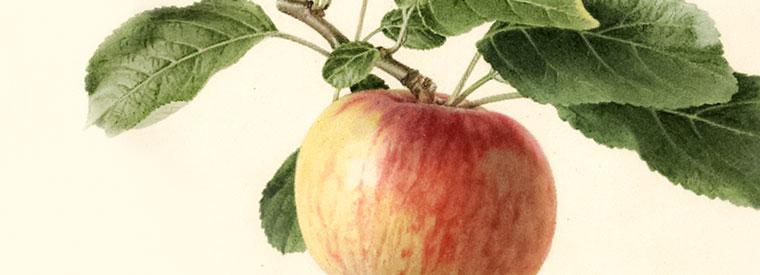"Humanity will be renewed in the Orchard, and the Orchard will restore it."

Fruit
LADY APPLE has been known in France as Nome Api for over 300 years, and is also called Lady's Finger, Petit Api, Pomme de Api, Pomme Rose, Christmas Apple, Lady Sweet and dozens of other synonyms, both correct and incorrect. It is possibly the Appian apple of the Roman Empire. There are cultivars of Lady Apple that are larger in size but are considered of lesser quality, i.e., Black Lady Apple, Star Lady Apple, Large Lady Apple, Rose-colored Lady Apple, and the seedlings Helen and Highland Beauty. One of the first European apples brought to America, it is thought to have been found in the Forest of Apis, Brittany, France, and was recorded in 1628. It is small, flattish in shape with a shiny skin that ranges from creamy-yellow in the shade to a deep glossy-crimson on the sun-exposed side. The flesh is tender, white, crisp and very juicy, with much of the flavor in the skin. The flavor has been described as effervescent. For dessert, cooking, cider making and decoration, especially in Della Robbia wreaths, Lady Apple is an excellent keeper that ripens in October.
Upright in growth, the use of limb spreader in the tree is necessary to expose the fruit to sunlight for color improvement and to permit air circulation to reduce diseases. Slow to begin bearing, once production begins, fruiting is heavy, but tends to biennial bearing. Cross-pollination will improve fruit production. It is scab susceptible.
Ripening Period
- Mid Fall - October


